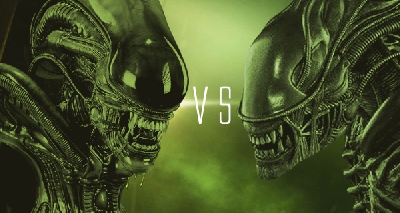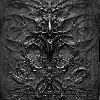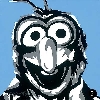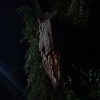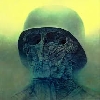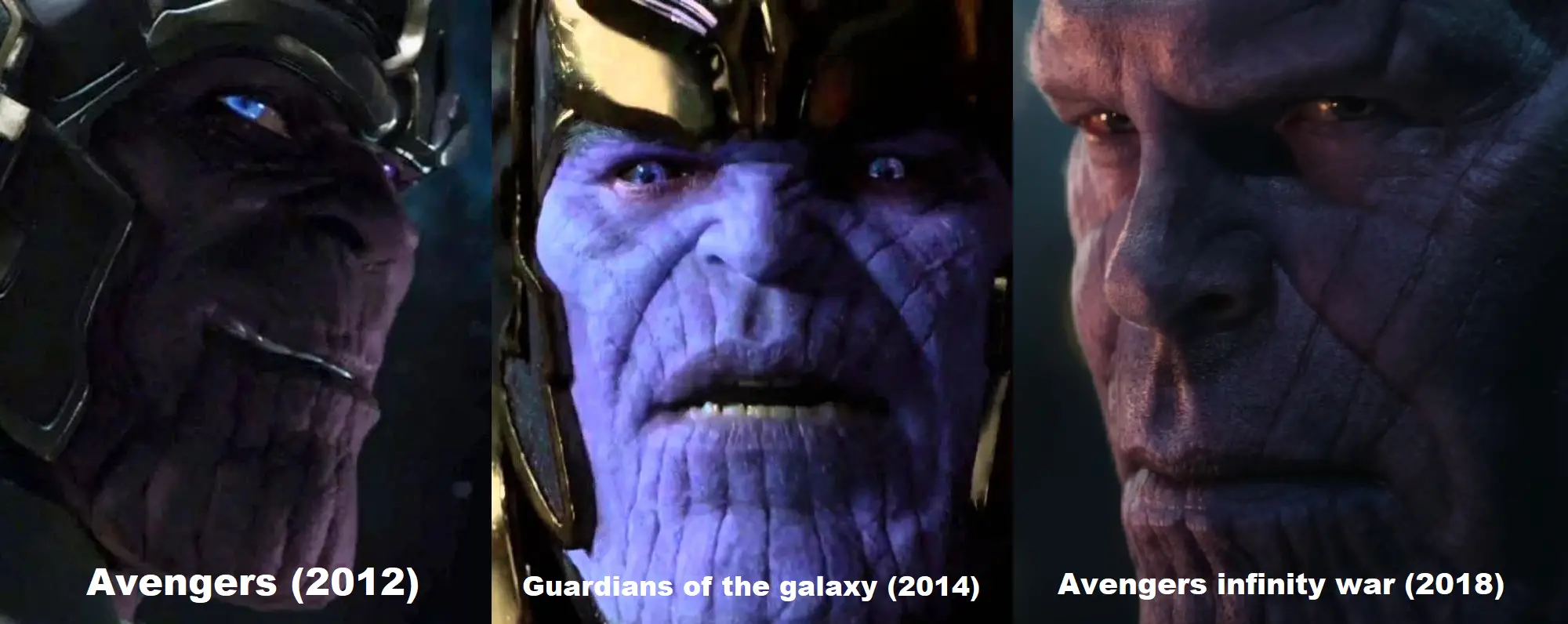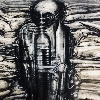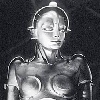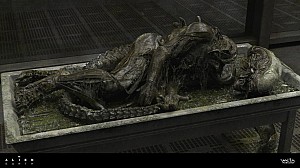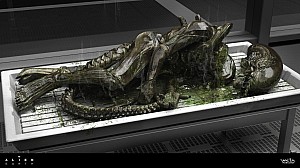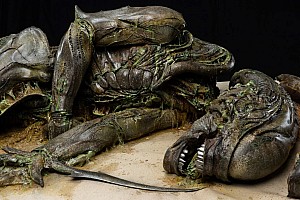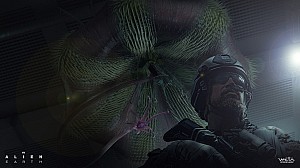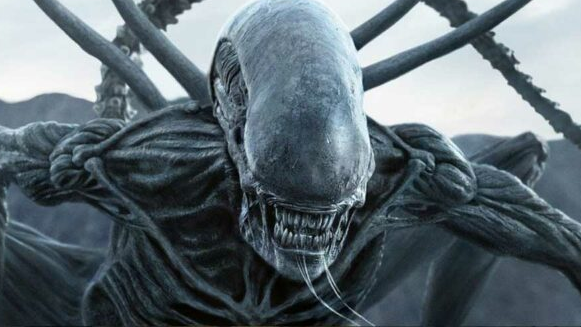Ever since its release in 1986 James Cameron's Aliens has polarized the fan base of the widely popular Alien franchise. For one portion of the fans, Aliens is a well-crafted action movie that has and continues to inspire fans of science fiction, such as with Paul Verhoeven's Starship Troopers and Bungie's Halo. For another portion of fans, however, Aliens is viewed as having lessened the evocative and nightmarish entity of the first movie into a horde of mindless insects. The disdain this portion of fans feel for the sequel is partly derived from the introduction of the Queen; a mother caste of the creature responsible for laying hordes of Ovomorphs (eggs), similar to those discovered by Kane beneath the derelict Juggernaut on Acheron, LV-426. The negativity towards Cameron's Queen comes from a deleted scene that was reintroduced into the 2003 directors cut of Ridley Scott's 1979 original, Alien. In this scene, while preparing to escape the USCSS Nostromo Ripley (portrayed for the first time by Sigourney Weaver) discovers her crewmates Brett (portrayed by the recently deceased Harry Dean Stanton) and Dallas (portrayed by Tom Skerritt) cocooned within the bowels of the ships lower levels, with Brett's body seemingly being mutated into an Ovomorph (AKA egg-morphing). Fans have since speculated that Dallas' fate was to be similar to Kane's, in which the Facehugger born from the Ovomorph that Brett was transforming into would have implanted a Xenomorph embryo inside of Dallas' chest. While Cameron's addition to the franchise gives the Alien an efficient means of propagation and reproduction, many fans feel that the original method shown in the deleted scene from Alien added to the creatures ambiguity and otherworldly nature.

Subsequent sequels Alien 3 and Alien: Resurrection, and the crossovers AvP and AvP: Requiem continued to feature Cameron's Queen as the creatures means of reproduction, choosing to ignore the now legendary egg-morphing scene. However, last years Alien: Covenant, the second in Scott's series of prequels to Alien, introduced audiences and fans to variant forms of the Xenomorph with the Neomorphs and the Protomorphs. While the latter shared many similarities with the classic Xenomorph both physically and in regards to its method of propagation the Neomorphs were shown to be closer physically to the Deacon that was featured in Prometheus' closing moments. Furthermore, rather than relying on a secondary organism (Facehugger) to implant 'morph' embryos into viable hosts, as found with the Deacon and Protomorphs, the Neomorphs instead directly infected their hosts from spore motes ejected from Black Pathogen contaminated fungal egg sacks. The Neomorphs use of infection rather than implantation from a parasite highlights the possibility that there can be variant forms of the Xenomorph, which we may have already seen evidence of in the previous installments of the Alien franchise.

In Scott's 1979 original characters Dallas, Lambert, and Kane enter the derelict Juggernaut via the three vaginally reminiscent openings in the vessels hull, this leads the trio to the vessel's cockpit and the remains of its dead pilot, beneath which Kane discovers a cache of thousands of Ovomorphs. However, in Cameron's sequel, the Jordens enter the derelict Juggernaut via one of its collapsed arms, and although Cameron originally intended to show the colonists exploring the same cache of Ovomorphs as seen in Alien it was never filmed and as such it was never shown where the Jordens discovered the Facehugger that was attached to Russ Jorden's face. Therefore it is possible that the Jordens may have actually discovered a second cache of Ovomorphs within the collapsed arm of the strange alien vessel, the Xenomorphs within which may have been a variant form that differed from those discovered by Kane beneath the pilot's chamber 57 years earlier.

If we presume the (mysteriously sourced) Facehuggers seen in Alien 3 to be from the Queen Alien that Ripley battled in the USS Sulaco's hangar, and with the knowledge that the Xenomorphs in Alien: Resurrection are all sourced from the Queen Chestburster that was gestating in Ripley's chest during Alien 3, then we can almost definitively state that all of the Xenomorphs from Aliens, Alien 3 and Alien: Resurrection are all sourced from either the Queen Xenomorph that was introduced in Aliens, or from wherever Russ and Anne explored within the derelict Juggernaut. If, with the egg-morphing scene having been reintroduced in the 2003 directors cut of Alien, we are to count this scene as canon, it would suggest that the introduction of the Neomorphs in Alien: Covenant was not just showing the evolution of the Xenomorph from its Black Pathogen progenitor but was also highlighting that dependent upon what organisms it contaminates, the Black Pathogen can result in variant forms of the Xenomorph.

In summary, what this theory is suggesting is that the Alien from the first movie may not be the same as those seen in its subsequent sequels, with both variants relying on different forms of propagation, with the former variant using egg-morphing and the latter using a mother-caste known as the Queen. Further examination of these variants would seem to suggest that the egg-morphing Xenomorph is a solitary creature with a heavily bio-mechanical appearance whereas the Queen born Xenomorphs have a more organic appearance and exist within a eusocial, supercolony hierarchy similar to that of ants and bees, with the Queen as the dominant figure. The Neomorphs introduced in Alien: Covenant also suggests that could be more variants of the Xenomorph not yet discovered or yet to be created through experimentation with the Black Pathogen on other organisms, as inferred in Alien: Covenant.

Despite having actually praised Cameron's design for the Xenomorph Queen, and almost working with Cameron on an Alien sequel Scott's return to the Alien franchise with 2012's Prometheus and last years Alien: Covenant has seen the director not only remove the crossovers AvP and AvP: Requiem from the franchises continuity, but also distance the franchise from its sequels with little to no mention of any of the elements seen in Cameron's Aliens, David Fincher's Alien 3 or Jean-Pierre Jeunet's Alien: Ressurection, which would seem to suggest Scott is trying to return the Xenomorph back to the primordial, ambiguous, and malevolent creature he introduced to audiences back in 1979. The possibility of variant forms of the Xenomorph opens up the franchise to almost limitless narrative possibilities. Somehow, within an overtly formulaic and generic "Alien" movie, Scott has (possibly unknowingly) evolved the Xenomorph, giving it another means by which to adapt and grow towards being... The Perfect Organism.
The next Alien movie
The state of the Alien: Romulus sequel remains uncertain. Production was originally supposed to have begun in October of 2025 but little news has surfaced. Be sure to bookmark the Alien: Romulus 2 Info Page for an up-to-date account of all available information, production updates and important details!
In addition to the upcoming Alien: Romulus sequel, we have the Alien: Earth TV series from Noah Hawley now streaming and a rumoured Alien vs. Predator reboot in the works as well!
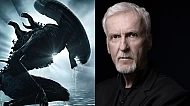
James Cameron: You couldn't pay me to go back to the Alien franchise – it's too fan driven.
Sitting down with actor Michael Biehn, Cameron talks Alien 3, touches on Alien: Earth, Romulus & explains why he will never go back to the Alien franchise.

Alien fans want another Alien prequel over Romulus 2 or anything else, according to new online survey!
It appears fans of the Alien franchise have grown tired of the same narratives being recycled and are finally embracing the idea of another Alien preq...
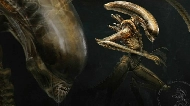
Alien: Romulus 2 still needs a director – Demián Rugna denies sequel involvement
The hunt for a director for the Alien: Romulus sequel is still on! Despite rumors circulating earlier this month that Demián Rugna might b...

